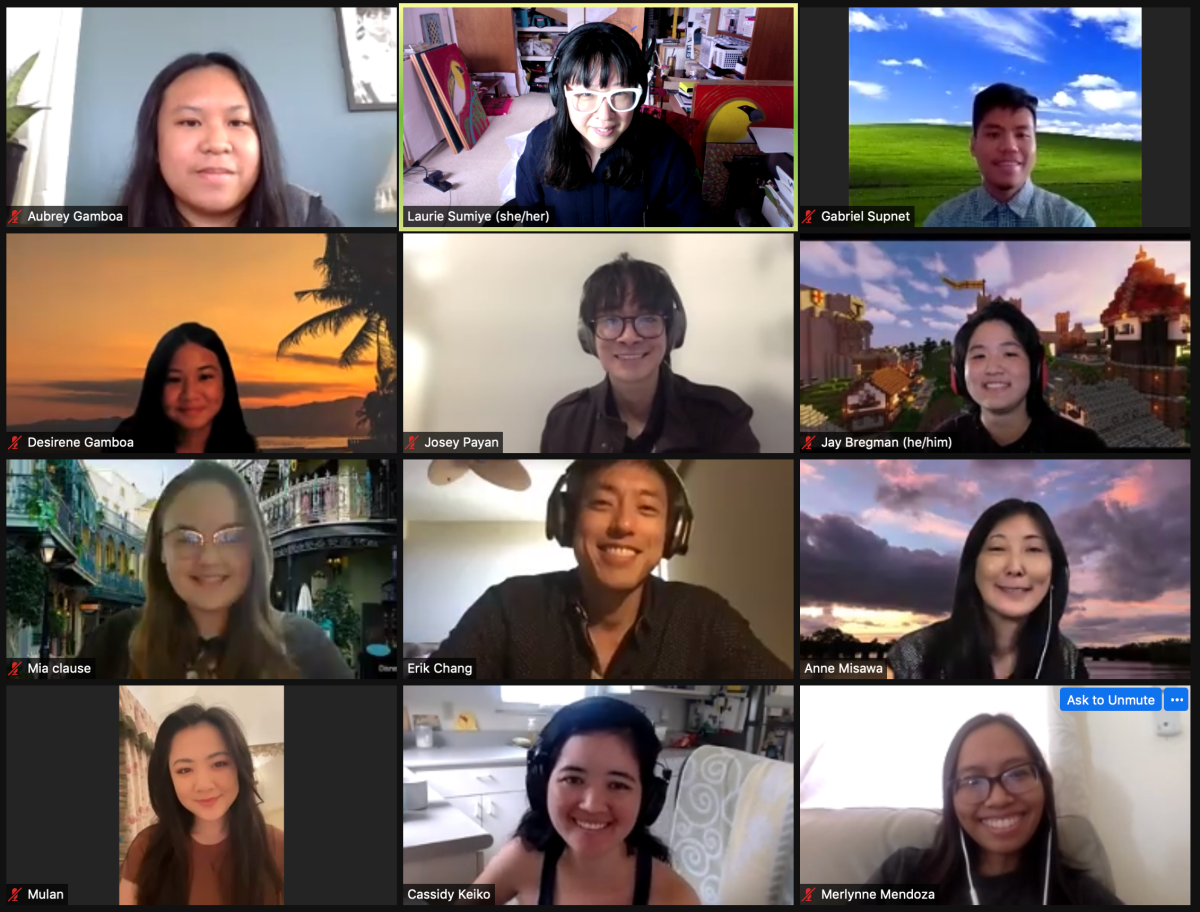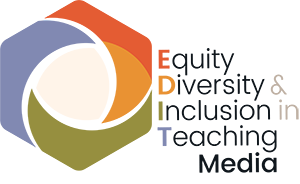
Crew Meeting from A Paradise Lost, courtesy Laurie Sumiye
by Laurie Sumiye
As an Asian American female film professor teaching at the University of Hawai‘i-West O‘ahu, I mirror the population of our students; 89% percent of students are minorities or people of color (BIPOC). “In the world of global entertainment and the push for diversity, who has the greatest chance to export this in the U.S.? It’s Hawai‘i,” said Georja Skinner, head of the Creative Industries Division of the state Department of Business, Economic Development and Tourism.
Hawaii has been described as a “melting pot,” according to the 2020 US Census, only 25.5% of Hawaii residents identify as white and AAPI (Asian American and Pacific Islander) represent 47.7% of the population. However, in the field of animation, I’m a tiny minority. In fact, “only 3% of animated film directors are women — and just 1% are women of color” according to a report from USC’s Annenberg Inclusion Initiative.
Inspired by my fellowship at Firelight Media, I have made inclusivity and diversity pillars of my overall hiring process for my independent feature animated documentary, A Paradise Lost. I mindfully crafted a team of camerapeople, animators, musicians, editors, producers from minority or underrepresented communities. Approximately 60% of our team are women; and 70% of the entire crew are BIPOC. I also wanted to make sure that Native Hawaiians were represented (over 15% of the crew is Native Hawaiian) as this film centers around a Native Hawaiian bird and its struggle to survive.
If I wanted to see more inclusion and diversity in my profession, I had to create those opportunities for up-and-coming BIPOC artists and choose to train them instead of hiring more experienced folks. This past summer I offered summer internships and PA positions for students and recent graduates from UH Mānoa, NYU and UH West O’ahu. In my hiring process, I asked candidates to describe their backgrounds (LGBTQ+, ethnic, geographic, economic) so I could offer market-rate, paid positions to those who needed the money and job opportunity the most. We ended up with a racially and gender diverse team of young animators and crew.
I created a 3 week bootcamp to ramp up the team to full production, training up interns and junior animators in my unique animation production process. For production, they support our key animators (all POC women), and learn the ropes in “pods” with collaborative group goals, performing team-oriented tasks and lessening pressure for individual success or failure by giving group feedback. Like a Hawaiian outrigger canoe team, everyone helps out, and lends a hand when someone is struggling or needing help. I set an expectation of collegiality and shared responsibility, so if one person is out sick or falling behind, someone else can cover. Specific tasks are assigned so individuals know what parts they are responsible for week to week, and can feel ownership for their contributions.
As a beneficiary of professional diversity initiatives, I truly understood the power as a Director/Producer and female of color in the position to hire and offer professional mentorship to offset the disparity within the media industry. Trusting my film to young artists for whom this was their first gig spoke to my entrepreneur AND teacher side — I could establish new practices of diversity and inclusion in animation, as well as cultivating a workplace culture of care, collaboration and non-competitiveness. So far it’s been a rousing success, and I hope to extend this more humane, non-exploitative, non-extractive, equitable model for directors interested in diversifying their teams.
How others might replicate this work I can boil down to four key takeaways:
- Be thoughtful and intentional about the kinds of opportunities you create for young, underrepresented talent. Diversity hires should not just be for show, but thinking about how their unique identities and experiences can contribute creatively to the project.
- Pay a fair wage. Only economically privileged students can afford to work for free.
- Cultivate a work environment of abundance and collaboration through the creation of pods, every member of the team is equal and they have autonomy to problem-solve the tasks, and everybody can “take a stab” of coming up with ideas. Roles are assigned per week, so no one gets too stuck in one job that gets repetitive. This reduces the competitive mindset found in many studio and agency environments where teams are pitted against each other.
- Creating diverse teams also means creating diverse ways of working. Don’t expect them to perform a “standard” way and allow for some flexibility and freedom, while setting clear tasks and deadlines to reach. I liken it to a captain pointing to a dot on a map, and letting the crew figure out how to get the ship there.
Many of us who teach media production can help build diversity not only by what we do in the classroom, but also by what we do as creators. We can model the kind of industry we want to see by building crews for our projects that are more diverse than the average independent film crew. The number one issue for students who come from underprivileged backgrounds is their lack of skills and training in certain areas. By offering a Bootcamp before production starts, it helps to level the playing field for students who come from different programs to get them up to speed with peers who may be more prepared.
Works Cited
CollegeSimply. “University of HAWAII West OAHU Diversity & Student Demographics.” CollegeSimply, www.collegesimply.com/colleges/hawaii/university-of-hawaii-west-oahu/students/.
Sim, Dhugga. “Animation Still Needs More People of Color Behind The Scenes.” Avaaz Media, 7 Oct. 2020, https://avaazmedia.com/animation-still-needs-more-people-of-color-behind-the-scenes/
U.S. Census Bureau (2020). Quick Facts. https://www.census.gov/quickfacts/HI.
Wessendorf, Cynthia. “The Statewide Effort to Turn Filmmaking into Hawai‘i’s Next $1 Billion Industry.” Hawaii Business Magazine, 30 July 2021, www.hawaiibusiness.com/the-statewide-effort-to-turn-filmmaking-into-hawaiis-next-1-billion-industry.
Smith, SL. (2019). Increasing Inclusion in Animation: Investigating Opportunities, Challenges, and the Classroom to the C-Suite Pipeline (Report No. 1). USC Annenberg Inclusion Initiative. https://assets.uscannenberg.org/docs/aii-inclusion-animation-201906.pdf
Laurie Sumiye is an environmental artist and storyteller whose work about Hawaiian endangered species. She has screened her award-winning films at DOCNYC, BAMcinemaFest and PS1MoMA and awarded residencies and fellowships with Sundance Institute, Firelight Documentary Lab, Blue Mountain Center, Digital Artist Studios (N. Ireland), Sacatar Institute (Brazil) and Artfunkl (UK) & UnionDocs Center for Documentary Arts. Laurie received an MFA in Integrated Media Arts from CUNY Hunter College, BA in Art & BS in Communications from Bradley University, currently serves as Assistant Professor of Film/Transmedia at the University of Hawai‘i-West O‘ahu.


